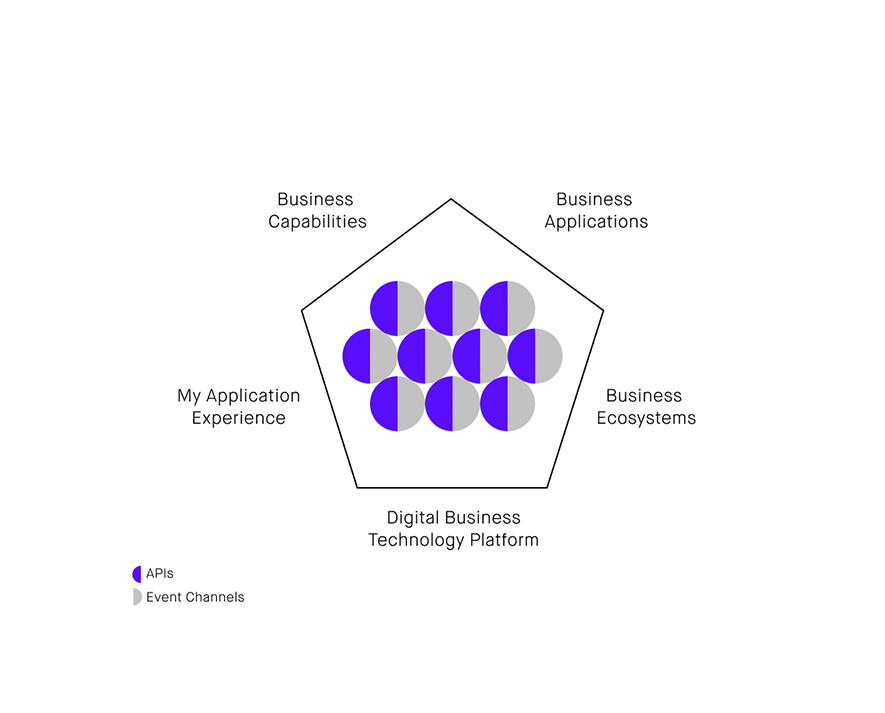Many companies today are striving for resilience in the face of uncertainty. To achieve this, agility, efficiency, and innovation are essential.
Luckily, there are technologies and methodologies that naturally lend themselves to these three adjectives: the composable approach.
Composable breaks down monolithic systems into smaller, flexible building blocks which helps you rapidly reconfigure your technology stack to meet changing market demands.
Efficiency is improved through modular design and a focus on reusable components, reducing duplication and streamlining processes. And, by leveraging open APIs, you can integrate new technologies and innovate faster to stay ahead of your competition.
The composable enterprise approach refers to the ability to assemble and combine different technologies and applications to deliver your packaged business capabilities (PBCs). In the enterprise context, composability is becoming increasingly important as organisations adopt a MACH (Microservices, API-first, Cloud-native, Headless) approach using microservices architecture combined with (headless) cloud-native SaaS services and a more agile approach to software development and deployment.
This allows you to become more modular and adaptable to business change by applying best-of-breed approaches.
However, this approach can lead to new integration challenges
This includes data integration, API integration, security integration, monitoring, and change management.
While dealing with the more frequent and rapid changes to the processes, systems, and data, it is crucial to:
- Ensure data consistency and integrity across the enterprise
- Have more sophisticated API management and governance
- Maintain a consistent and effective security posture
- Monitor and manage the performance and availability of all the different components

“A composable enterprise is an organisation that delivers business outcomes and adapts to the pace of business change. It does this through the assembly and combination of packaged business capabilities (PBCs). PBCs are application building blocks that have been purchased or developed.”
– Gartner
One way you can address these challenges is to use a low-code integration platform
Integration platforms provide tools and libraries for easily building and managing connections between different systems, enabling you to integrate and coordinate the various components and services in your composable tech stack. Using integration platforms as a service (iPaaS) adds the benefits of reduced cost, high scalability, ease of use, and higher development speed. Additionally, iPaaS is a good fit for MACH driven architecture.
DEPT® partners with Boomi and Mulesoft, and also has strong experience with Azure Integration Services. All of these platforms offer a range of features and capabilities that have proven to be particularly useful in a composable tech stack, such as:
- API management is the process of building, securing, and managing APIs (application programming interfaces), which are essential for enabling smooth communication and integration between the different systems in a composable technology stack. iPaaS platforms provide tools and libraries to help with this process.
- Data integration can be easily achieved using iPaaS and its out-of-the-box connectors. These connectors make it easier to integrate and synchronise data between different systems, which can be especially useful in a composable technology stack where data needs to be shared and accessed by multiple components and services.
- Transformation and orchestration help you transition to a composable architecture while still relying on legacy and/or monolithic systems. It can also involve integrating data from different sources, such as combining product information from a Product Information Management (PIM) system with content from a Content Management System (CMS) into a single response.
- Event-driven architecture (EDA) allows different components to communicate with each other through events, enabling a more flexible and decoupled integration. EDA with iPaaS can help build more flexible, scalable, and decoupled systems.
- Workflow automation refers to the use of technology to automate the execution of business processes and workflows, which can help you work more efficiently by reducing the amount of manual effort required to complete tasks.
- Support for ETL (Extract, Transform, Load) to move data from multiple sources into a centralised repository, such as a data warehouse, for analysis and reporting.
Integration platforms can play a crucial role in a composable tech stack, enabling you to effectively manage and coordinate the various components and services in your composable enterprise and deliver a seamless, composable digital experience to your customers.
Questions?
Account Director & Head of Business Development





